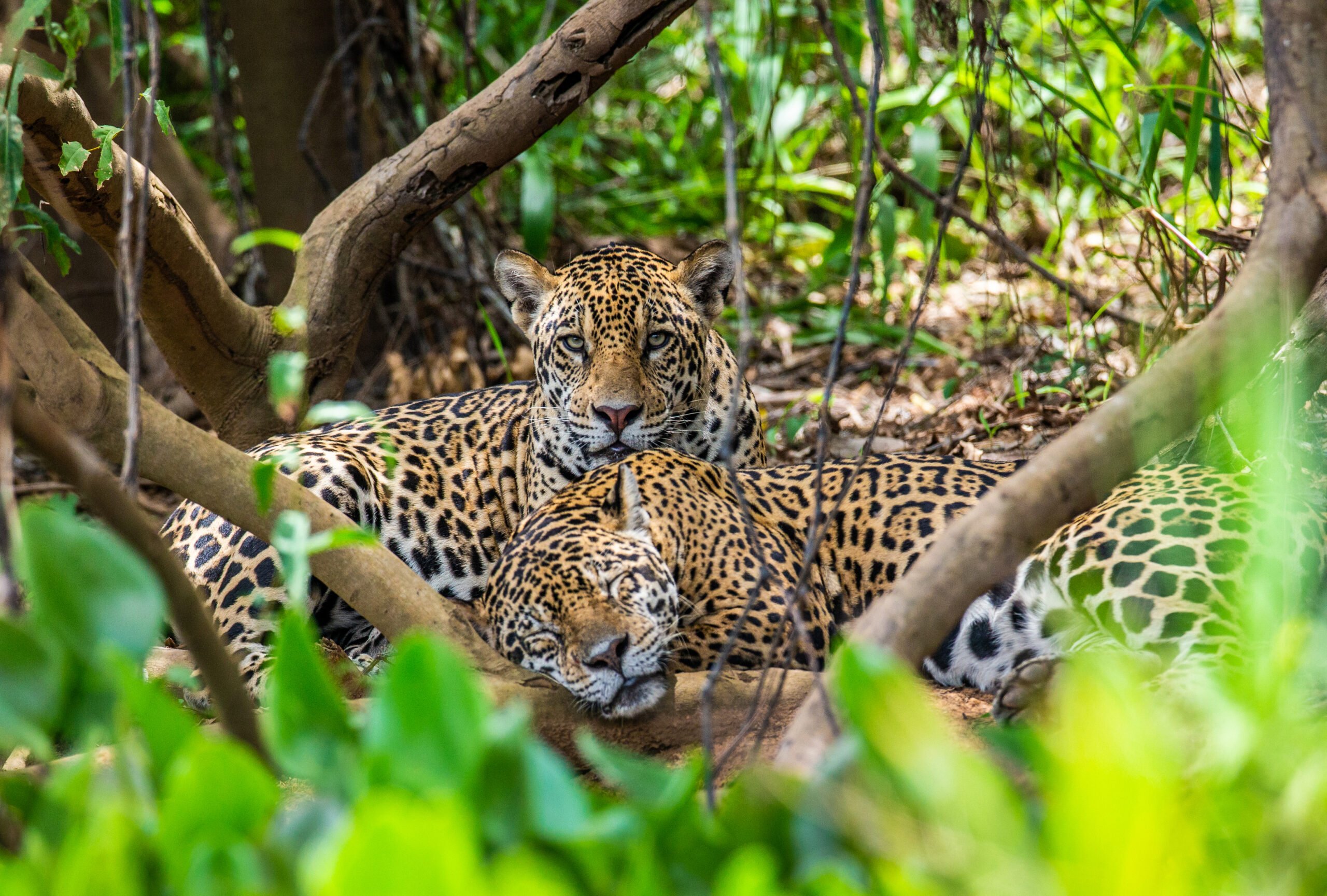Sri Lanka often hailed as the “Pearl of the Indian Ocean,” is a tropical haven celebrated for its breathtaking landscapes and abundant biodiversity. Within its natural wonders lie, endemic creatures, from vivid avian species to enigmatic mammals and captivating reptiles. This island nation proudly showcases a collection of exceptional wildlife, exclusive to its shores and unmatched anywhere else on the planet.
Sri Lanka stands out as an endemism hotspot, housing numerous species exclusive to its borders. The island’s geographical isolation and varied ecosystems have played a pivotal role in shaping unique and specialized wildlife. Let’s delve deeper into some of Sri Lanka’s most renowned native creatures.
01. Red Slender Loris

The Sri Lankan Red Slender Loris (Loris tardigradus) is a small, nocturnal primate species endemic to Sri Lanka. Known for its distinctive appearance and slow, deliberate movements, this charming creature has captured the fascination of researchers and wildlife enthusiasts alike.
Characterized by its reddish-brown fur, large round eyes, and elongated limbs, the Red Slender Loris has evolved unique adaptations for its nighttime lifestyle. Its large eyes enhance low-light vision, and its specialized hands and feet possess grasping abilities, allowing it to navigate treetops with agility. Feeding primarily on insects, small vertebrates, fruits, and tree sap, the Red Slender Loris employs a deliberate and deliberate hunting strategy, relying on its stealth and precision to secure food.
Unfortunately, the Red Slender Loris faces conservation challenges due to habitat loss and fragmentation, as well as potential pet trade and cultural beliefs. Conservation efforts are underway to protect its natural habitat and raise awareness about the importance of preserving this enigmatic primate species for future generations.
02. Sri Lankan Leoperd

The Sri Lankan Leopard (Panthera pardus kotiya) is a unique and endangered subspecies of leopard found exclusively on the island of Sri Lanka. It is one of the apex predators of the region and holds a significant place in the island’s biodiversity and cultural heritage.
Distinctive for its smaller size and more vibrant coat compared to other leopard subspecies, the Sri Lankan leopard is known for its golden-yellow or rusty-red fur covered with dark spots and rosettes. This camouflaged coat helps it blend seamlessly into the diverse habitats it occupies, including tropical forests, grasslands, and scrublands. As a top predator, the Sri Lankan leopard plays a crucial role in maintaining the ecological balance of its environment. It preys on a variety of animals, including deer, wild boar, and smaller mammals, helping regulate prey populations and supporting ecosystem health.
However, the Sri Lankan leopard faces various threats, primarily habitat loss due to deforestation and human encroachment. Additionally, human-wildlife conflicts and poaching are challenges that impact its survival. Conservation efforts are being undertaken to protect its habitats, mitigate conflicts, and raise awareness about the importance of preserving this magnificent and rare subspecies for future generations.
03. Sri Lankan Spotted Chevrotain

The Sri Lankan Spotted Chevrotain (Moschiola meminna), also known as the Sri Lankan Mouse-Deer, is a distinct and diminutive mammal endemic to Sri Lanka. Belonging to the Tragulidae family, it is among the smallest hoofed animals globally, showcasing a captivating blend of unique characteristics.
With an average height of 30 to 40 centimeters (12 to 16 inches) and a weight of 2 to 4 kilograms (4.4 to 8.8 pounds), the Sri Lankan Spotted Chevrotain possesses a striking reddish-brown coat adorned with white spots. This cryptic pattern enables it to expertly blend into its forested surroundings, protecting it from predators. This crepuscular and nocturnal creature is most active during dawn and dusk, relying on its sharp sense of smell and agility to forage for fallen fruits, leaves, and vegetation. Its elusive nature and preference for dense habitats make sightings rare and highly sought after by wildlife enthusiasts.
However, habitat loss and fragmentation pose significant threats to the survival of the Sri Lankan Spotted Chevrotain. Conservation initiatives aimed at preserving its natural habitat are essential for ensuring the continued existence of this remarkable species.
04. Sri Lankan Sloth Bear

The Sri Lankan Sloth Bear (Melursus ursinus inornatus) is a distinctive subspecies of sloth bear native to Sri Lanka. Recognized for its shaggy black coat and a characteristic white V-shaped mark on its chest, it thrives in various habitats, from forests to grasslands. This omnivorous species predominantly feeds on insects, particularly termites, and ants, using its long, curved claws for extraction. Sloth bears exhibit unique behaviors, including tree-climbing and a distinct “sloth walk” gait. Females rear one or two cubs in family units. Unfortunately, habitat loss and human conflicts pose significant threats to their survival. Conservation efforts aim to protect their environment and promote harmonious coexistence. Observing these elusive creatures in the wild offers a rare and remarkable opportunity to appreciate Sri Lanka’s exceptional biodiversity.
05. Sri Lankan Krait

The Sri Lankan Krait (Bungarus ceylonicus) is a venomous snake species native to Sri Lanka. Recognizable by its striking black and white banding, this elapid snake is of medical importance due to its potent venom. Typically found in a variety of habitats, including forests and agricultural areas, the Sri Lankan Krait is primarily nocturnal and preys on other snakes and small vertebrates. While its venom contains neurotoxins that can be dangerous to humans, it is generally not aggressive and prefers to avoid confrontation. Due to its secretive nature, encounters with the Sri Lankan Krait are rare, but their venomous potential underscores the need for caution and conservation efforts to protect both the species and human populations.
06. Purple Faced Langur

The Sri Lankan Purple-Faced Langur (Trachypithecus vetulus) is a distinctive and captivating primate species endemic to Sri Lanka. Renowned for its striking appearance, the langur has a unique purple hue on its face, contrasting with its dark gray to black fur, and a distinctively long tail. This diurnal langur primarily inhabits the lush forests of Sri Lanka, where it is a vital part of the ecosystem as a folivore, primarily feeding on leaves, fruits, and flowers. The species also plays a crucial role in seed dispersal and maintaining the balance of its habitat. However, habitat loss due to deforestation and human encroachment poses a significant threat to the survival of the Sri Lankan Purple-Faced Langur, leading to its classification as endangered. Conservation efforts are crucial to ensuring the preservation of this remarkable primate species for future generations.
07. Sri Lanka Frog Mouth

The Sri Lanka Frogmouth (Batrachostomus moniliger) is a fascinating nocturnal bird species native to Sri Lanka and parts of southern India. With its distinctive appearance, it possesses a wide, frog-like mouth adapted for capturing insects in mid-air. Its plumage is mottled and camouflaged to resemble tree bark, aiding in its secretive nature. This bird is primarily arboreal and resides in dense forests, relying on its cryptic coloration for protection. Despite its unique characteristics, the Sri Lanka Frogmouth faces threats from habitat loss and deforestation. Conservation efforts are vital to safeguard this intriguing and lesser-known species.
08. Sri Lankan Elephant

The Sri Lankan Elephant (Elephas maximus maximus) is a subspecies of the Asian elephant found exclusively in Sri Lanka. These majestic creatures are characterized by their large size, distinctive domed forehead, and relatively short legs. They inhabit various habitats, including forests, grasslands, and wetlands. Sri Lankan elephants play a crucial ecological role in seed dispersal and vegetation management. However, they face significant threats such as habitat loss, human-wildlife conflict, and poaching. Conservation efforts, including protected areas and community engagement, are essential to safeguard these iconic animals and ensure their coexistence with local communities.
09. Sri Lankan Junglefowl

The Sri Lankan Junglefowl (Gallus lafayettii), also known as the Ceylon Junglefowl, is a striking and endemic bird species found exclusively on the island of Sri Lanka. This colorful and charismatic fowl is not only an iconic representative of the country’s avian diversity but also holds cultural and historical significance.
Distinctive for its vibrant plumage, the male Sri Lankan Junglefowl boasts a combination of iridescent blue and green feathers on its head and neck, while its body is adorned with rich hues of red, orange, and gold. The female, on the other hand, has more subdued colors for camouflage. These junglefowls inhabit various habitats ranging from dense forests to scrublands and cultivated areas. They are primarily ground-dwelling birds, foraging for food such as seeds, insects, and small invertebrates. Their distinctive calls, which include a series of loud cackles, can often be heard echoing through the forested landscapes.Sri Lankan Junglefowls are not only fascinating from a natural history perspective but also hold cultural importance. They are considered the ancestors of the domestic chicken, and their presence is intertwined with local legends and traditions.
10. Sri Lanka Whistling Thrush

The Sri Lanka Whistling Thrush (Myophonus blighi) is a distinctive bird species endemic to Sri Lanka. With its striking blue-black plumage and melodious song, it thrives near freshwater streams and waterfalls in the island’s montane forests. This whistling thrush is known for its unique vocalizations that echo through the lush surroundings. It plays a vital role in seed dispersal and insect control. Due to habitat loss and human activities, this species faces conservation challenges. Efforts to protect its habitat and raise awareness are crucial for ensuring the survival of Sri Lanka’s Whistling Thrush and maintaining the country’s rich avian biodiversity.
11. Ceylon Spiny Mouse

The Ceylon Spiny Mouse (Mus cervicolor) is a small rodent species found in Sri Lanka. It is known for its distinctive spiky fur, which provides protection against predators. These nocturnal creatures are adept climbers and primarily inhabit forests and shrublands. Ceylon Spiny Mice are omnivorous, feeding on a variety of plant matter, insects, and small vertebrates. Due to habitat loss and human activities, their populations are under pressure. Conservation efforts are essential to preserve the unique biodiversity of Sri Lanka, including this intriguing and lesser-known species.
What are the challenges and threats facing endemic animals?
Endemic animals in Sri Lanka face a range of challenges and threats that imperil their survival. Habitat loss due to deforestation, urban expansion, and infrastructure development disrupts their ecosystems. Human-wildlife conflicts intensify as expanding human populations encroach on habitats, leading to negative interactions and potential harm to both species. Illegal poaching and trading for pets and traditional medicine further deplete their populations. Invasive species outcompete and prey on endemics, disrupting natural balances. Climate change alters habitats and behaviors, affecting breeding and food sources. Pollution from various sources contaminates their environments, jeopardizing health. Inadequate awareness and weak law enforcement undermine conservation efforts. Fragmented habitats and genetic isolation increase vulnerability to diseases and genetic disorders. Addressing these challenges demands a coordinated approach involving habitat protection, community engagement, anti-poaching measures, education, and policy enforcement to safeguard Sri Lanka’s unique endemic animals.
What is the importance of endemic species conservation?
Endemic species conservation is vital for preserving unique genetic diversity, maintaining ecosystem stability, and sustaining cultural heritage. These species play specialized roles in their habitats, contributing to pollination, seed dispersal, and ecosystem health. Their survival informs scientific knowledge, supports ecotourism, and enhances climate change resilience. By safeguarding endemic species, we protect the intricate web of life, ensure the continuity of cultural traditions, and bolster the overall health of ecosystems, benefitting both nature and humanity.
Can tourists observe endemic animals in Sri Lanka?
Yes, tourists have the opportunity to observe endemic animals in Sri Lanka. The country’s diverse ecosystems and protected areas provide chances to see unique wildlife. National parks like Yala, Udawalawe, Horton Plains, and Sinharaja Forest Reserve offer guided tours and safaris where tourists can witness endemic species such as the Sri Lankan leopard, Ceylon slender loris, and various bird species. Knowledgeable guides enhance the chances of spotting these animals while promoting ethical and responsible wildlife tourism. It’s important to respect guidelines, maintain a safe distance, and minimize any disturbance to ensure the well-being of both the animals and their habitats.







